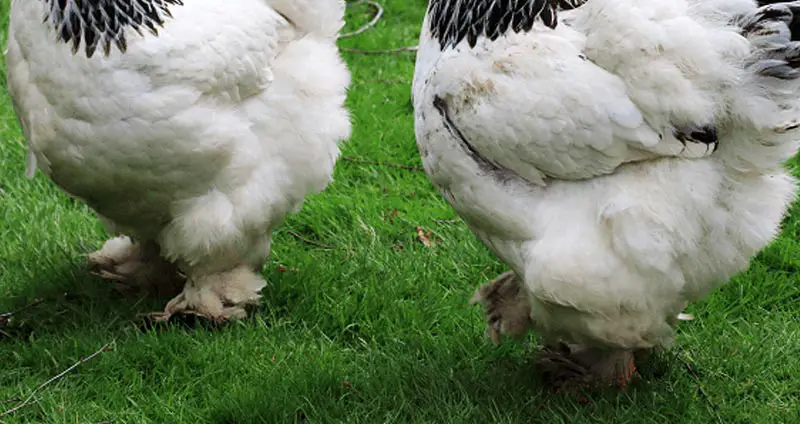When picturing the typical chicken, a certain image comes into mind. This image might not include feathered feet, and that’s perfectly understandable. Instead, you might picture something more claw-like.
However, chickens with feathered feet are more common than you think. Today, we’ll explore what you need to know about this unique characteristic.
Let’s jump in!
Table of Contents
Types of Chickens With Feathered Feet
Certain types of chickens are characterized by their feather feet. They include silkies, Cochins, Brahmas, and sultans. Let’s take a quick look at them.
Silkie
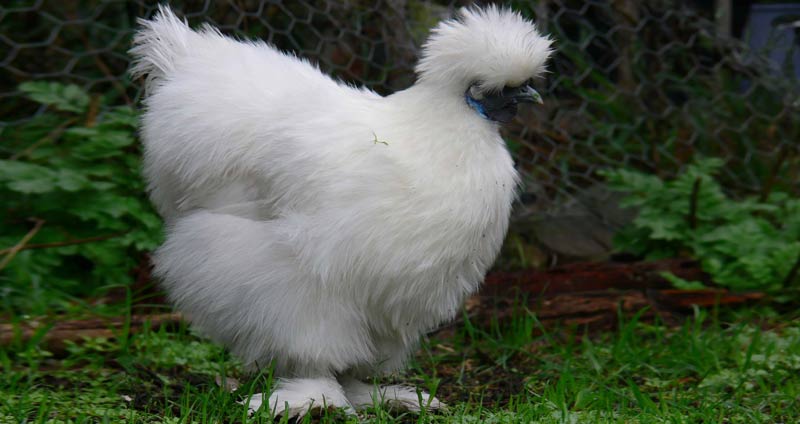
The exact origin of the Silkie is unknown. It’s mainly agreed that they originated from Asia, but the precise location is highly debated among poultry enthusiasts.
However, a written account of Silkies exists. One such account dates back to the 13th century. It was by Italian merchant and explorer Marco Polo, who recorded a sighting of a ‘furry’ chicken during his travels in China.
Silkies are among the most unique breeds of chicken. For one, they have characteristic black skin, an unusual color among chickens. Moreover, they also have blue earlobes.
However, Silkies are mainly characterized by something entirely different. Having an atypically feathered plumage, they’re marked by their satiny-smooth, fur-like exterior. This unusual abundance in feathers extends even to their feet, creating their feather-footedness.
But feathers aren’t the only thing that makes these chickens different. Silkies have five toes, whereas other chickens have only four.
Cochin
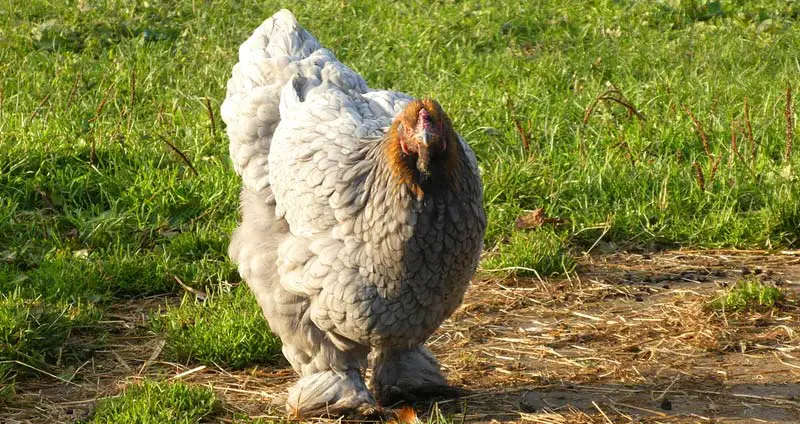
Originally known as Cochin-China, this chicken belongs to one of three Asiatic classes. The other two chickens are the Brahma and the Langshan, both of which are similarly feather-footed.
You can tell a Cochin apart by its sheer size. It’s considered one of the largest breeds of chickens. Much like the Brahma, it makes for good meat production.
Beneath its excessive plumage, the Cochin is yellow-skinned. There’s more to its appearance, though. On top of its head, it has single combs along with red wattle and earlobes.
Due to its highly-prized appearance, a Cochin is primarily reared for ornamental purposes. Though, the thick plumage is more than just mere looks. A Cochin’s coat of thick feathers helps them manage in colder temperatures.
Brahma
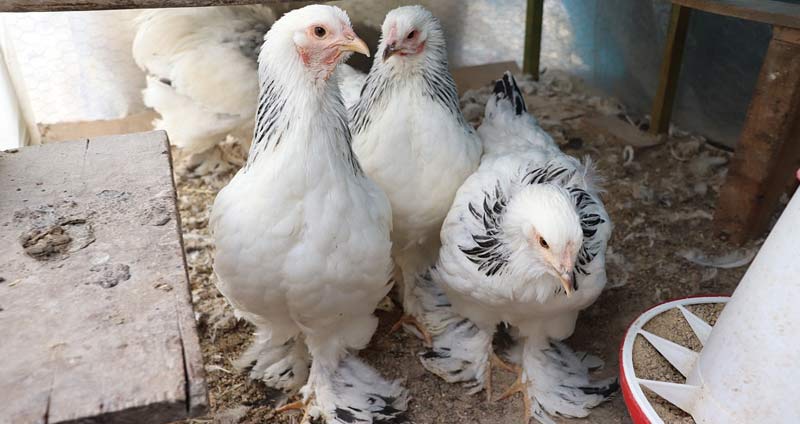
Named after the Brahmaputra River in India, you might think that this chicken came from South Asia. Contrary to what many might believe, this breed of chicken was actually developed in the United States.
These chickens fueled the 1850’s Hen Fever in the US and UK. They were considerably bigger than a regular chicken, which made for great meat production. But they were also prized for their unique physical characteristics, with their feathered feet being one of them.
To the untrained eye, a Brahma might resemble a Cochin. This is because it’s a crossbreed of Malay and Cochin.
Both the Brahma and the Cochin are similarly sizable. However, the former is different from the latter due to its pea comb and characteristic head shape.
Sultan
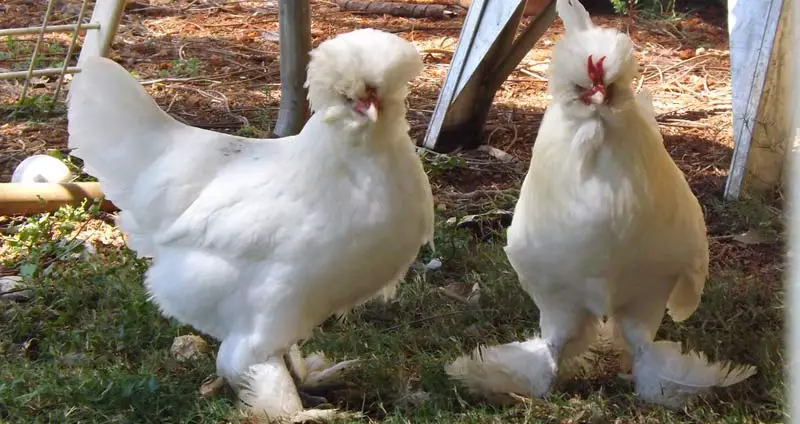
These chickens are undeniably unique in appearance. This is why they used to be kept in the gardens of the Ottoman sultan, after all. Sultans are quite rare, which makes for an even more impressive ornamental quality.
This chicken is the height of oddity. It even shares an unusual characteristic with the Silkie: it has five toes instead of just four.
Yet, that isn’t where the similarities between the Sultan and Silkie end. Both are lauded for their heavy, feathery plumage, along with their agreeable temperaments.
However, a Sultan has a more distinctive cascade of feathers on top of its head. It also has muffs, a V-shaped comb, and even a similarly feathery beard. Its generous feathers eclipse its feet as well, creating an overall distinctive look that sets them apart from other chickens.
Can You Trim the Feathers Off of a Chicken’s Feet?
Many might think that having feathered feet might be an obstacle for chickens. If you’re concerned that feathers might get in the way of their walking, then rest assured. Most of the foot feathers will wear down with time.
After all, the feathers aren’t just there for aesthetic purposes. They assist in keeping the chicken’s feet warm in colder temperatures. They work well in warmer temperatures too, as they help fan the chicken’s feet when walking.
There’s also the possibility of accidentally cutting a blood feather. A blood feather is a feather growth that takes 5-7 days to start to open and grow. If you cut such a feather, you can risk seriously hurting your chicken.
However, mud and waste represent a challenge to a chicken’s feathers. They can easily get caked up on a chicken’s foot feathers.
So if you still insist on trimming them for similar reasons, then you should be careful. Always make sure to cut the feather down to two inches away from the chicken’s foot.
Is It Hard to Care for Chickens With Feathered Feet?
Many people would argue that feather-footedness can prove to be a hassle, especially when it comes to caring for your chicken. A chicken’s foot feathers will likely collect bodily waste and other similar unsavory things.
It’s not hard to care for a feather-footed chicken. However, there are certain practices you should keep up to properly care for your chicken. One of them is to check your chicken’s feet regularly. Using a toothpick or any similar instrument, make sure to clean any dirt that’s caked up on foot feathers.
Keeping Feathers Clean Is Important
Another thing you want to ensure is cleanliness. All sorts of dirt and even droppings can quickly build up on a chicken’s feathers. It can grow quite messy, especially when concerning foot feathers.
It’s important to site your coop and run. This way, it won’t become muddy. So, when chickens make their way to their nests, the area will remain clean. If it doesn’t, this can make eggs a big, muddy mess.
In that case, washing eggs isn’t recommended. When left unwashed, eggs can stay fresher for longer, due to the layer of bacteria found in the pores of the shell.
Overall, it’s best to keep a chicken’s feathers clean. Not only it’ll be easier to handle, but it’ll prevent any unnecessary problems.
Conclusion
These gorgeous, feathery chickens are a little more unique than a regular chicken. But whether it’s a Silkie, Cochin, Brahma, or even a Sultan, their feather-footedness shouldn’t be a problem. All you need is proper care and time.

